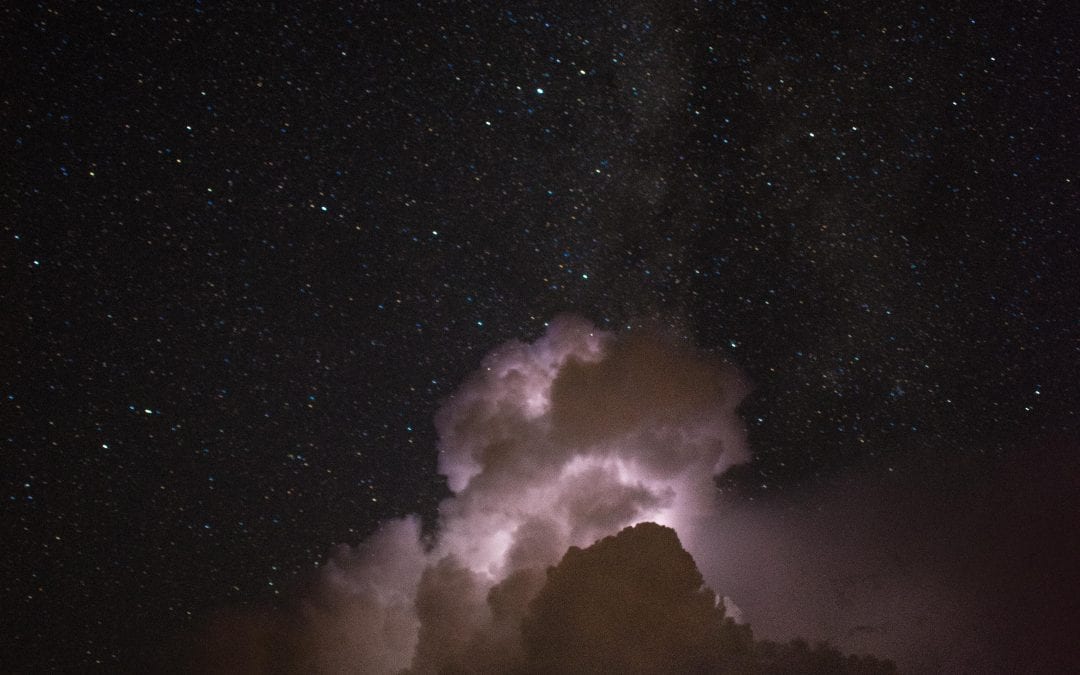(Photo by Antonio Valdez)
By Jared Barnhart
At 4:30 AM in 1994 Los Angeles, an earthquake shook residents awake. As they walked outside to assess the damage and check on neighbors, some noticed a strange, silvery cloud hanging in the sky. Some residents were so worried that they called 911, thinking there were aliens overhead.
It wasn’t aliens- people had just seen the Milky Way for the first time.
Ever since mankind could control and contain sources of light, we’ve used them to push back the darkness. As the electric age came upon us, our ability to hold off the night grew exponentially, with cities lighting up the land bright enough to be seen from space. City skies now glow yellow, the stars in the sky dimmed by the thousands of lights surrounding them. Our skies are being polluted. Not all pollutants spew in black clouds from ugly smokestacks.
New York isn’t the only city that never sleeps; our circadian rhythms (biological clocks) are being thrown off by the lack of true darkness. The production of melatonin, a sleep hormone, is largely dependent on our circadian rhythms that evolved over millions of years. Now that it’s never dark, our bodies aren’t getting the signal to sleep like they used to. Night vision is a characteristic that also evolved over millions of years, yet 14% of the world’s population never uses their night vision at all. Animals are suffering, too. The length of the day signals when it’s time to migrate or mate. Predators use the darkness to hunt. Prey use the darkness to hide. Entire ecosystems are being disrupted by our drastic alteration of the night sky.
Light pollution also makes it really hard to appreciate the beauty of the night sky. What was once a giant black canvas stretching across the sky, filled with twinkling stars and ethereal colors, is now a dull, yellowed haze lingering over every city and village in the world. Although I’m not an avid hunter, fisher, hiker, or skier, I still consider myself an outdoorsman. My favorite way to appreciate the outdoors is to pitch a tent in the middle of nowhere with my friends and watch the sky morph into glittering darkness. Unfortunately, dark skies are getting harder to come by. About two out of every three Americans can’t see the Milky Way or the stars from their home.
Many of the negative effects of light pollution can at least be mitigated with a little planning and consideration. About 35% of the outdoor lighting we use is unshielded or poorly directed, meaning it’s free to spread into the sky or it’s not aimed at what we’re actually trying to illuminate. Most of this outdoor lighting is used to illuminate empty roads and parking lots. Instead of throwing flood lamps on every corner of every building, focused and well-placed lighting can achieve the desired effect without spoiling the night sky for everyone. Billboards, as unsightly as they may be, can still be seen if the lights are placed on top aiming down rather than on the bottom aiming up. Having darker city streets or alleyways or parking lots won’t make us unsafe, either. Darkness is okay- humans have night vision for a reason. There is very little correlation between illumination and public safety. In fact, one study performed by the Chicago Alley Lighting Project showed an increase in crime with more lighting. There’s no need to subject animals and humankind to our brilliant billboards, our empty and irradiated roadways, and our glowing city horizons.
For as long as mankind has existed, we’ve gazed at the stars. We feel contentment at seeing the pretty, picturesque sight the cosmos has gifted us. We feel wonder now with modern astronomy more than ever, contemplating just how small we are to the universe, or if other life is out there wondering the same thing. We feel fear of the unknown, fear of our own insignificance, and fear of knowing mankind may never reach another star to explore it. We feel bliss, knowing that our life on a tiny rock floating in space has whatever meaning we give to it, and that we can at least enjoy ourselves with some pretty lights in the sky.

